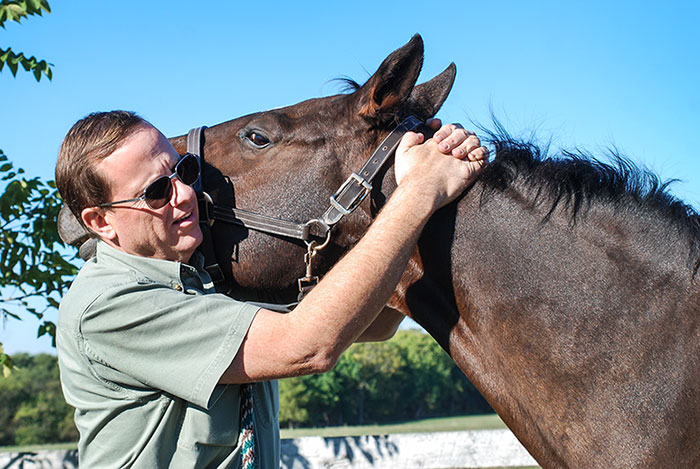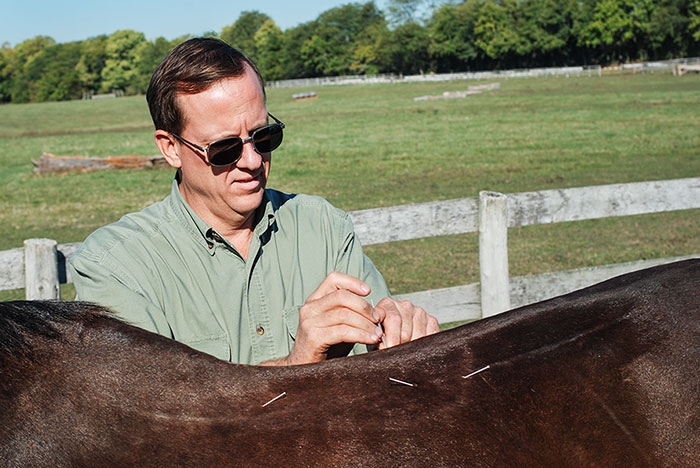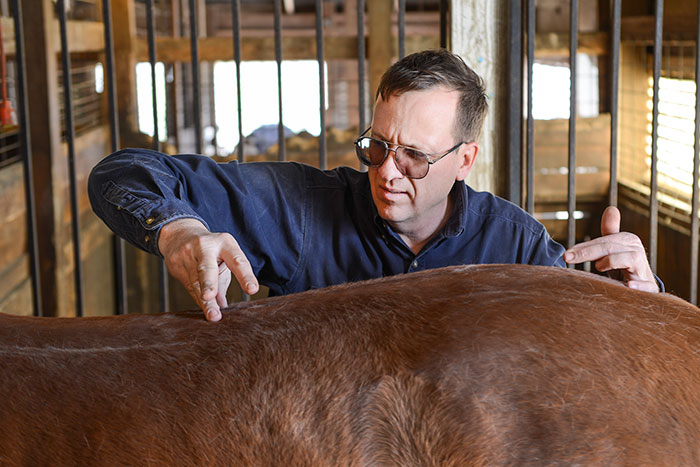Wagner Horse Doc
Keith L. Wagner DVM
Book Now For Upcoming Road Trips
Improving the athletic performance of your horse is accomplished with Applied Kinesiology directed Chiropractic manipulation. Proper biomechanical function supports joints and tendons reducing the risk of lameness. Along with Advance Chiropractic care supplemented with Applied Kinesiology, I also preform Acupuncture treatments to help maintain your equine athlete in balance.
Columbia & Jefferson City, MO
June 13, 2025
Iowa Trip
June 16-18, 2025
why work with us?
We offer Advance Chiropractic Care Supplemented with Applied Kinesiology and Acupuncture Treatments
Traditional Western Veterinary Medicine
Like most veterinarians in the United States and Europe my practice started on providing the best traditional Western veterinary medicine. While incredible advancements have been made in traditional veterinary medicine in recent years, granting your horse the opportunity for better disease treatment, pain control, and quality of life, I found that there are complimentary veterinary practices that aid in providing more comprehensive care.
Holistic veterinary medicine
Using a more universal approach, holistic veterinary medicine encompasses the physical, mental, emotional, and spiritual well-being of your horse. Holistic medicine emphasizes the use of alternative therapies, such as chiropractic; food therapy; and traditional Chinese methods, such as acupuncture and herbal medicine, in your horse's treatment plan. Depending on the underlying condition, many horses thrive with this type of care.
Integrative veterinary medicine
While Western and holistic approaches have their own advantages, each one tends to lack something that another can provide. Integrative veterinary medicine is the ideal blend of Western, traditional Chinese, and holistic veterinary practices. Veterinarians are finding that many ailments are best treated with a combination of these techniques.
Complimentary Medicine

Chiropractic Care improves joint motion thereby increasing stimulation into the nervous system to enhance the neural output to the musculoskeletal, organ and endocrine systems along with the immune response.
Typically applying force to a bone, the chiropractic adjustment delivers a force to a joint or motion unit of the spine. This adjustment therefore increases joint motion and motion input receptor activity which stimulates output nerves to the body for improved balance and performance.

As one of the five modalities of Traditional Chinese Veterinary Medicine (TCVM), acupuncture has been used for thousands of years. TCVM’s philosophy is good health creates an equilibrium or balance of all of life’s processes, allowing acupuncture to be a means of trying to return the body functions back to balance or equilibrium state. Traditionally thought of as applying needles to specific points on the body, acupuncture within TCVM also encompasses use of electrical impulses, medicinal herbs, and message therapy along with diet evaluation.

Applied Kinesiology or "AK procedures" are methods of diagnosis used to enhance standard diagnostics, not replace it.
The tests are easy to perform.
The sensitivity and reproducibility with knowledgeable examiners of the tests are very good as we assess the function of the nervous system.
Since the nervous system directs healing and maintains health, evaluation and treatment of the nervous system with chiropractic manipulation or acupuncture enhances our treatment of the patient.
Breakthrough Treatments
Treatments that separate Dr. Keith Wagner DVM from the herd.
Colic
A New and Better Way to Treat Spasmodic or Gas Colic in Horses.
The first time I saw it I had to think, did I just see what I thought I saw? Within 30 seconds of a chiropractic adjustment our older Thoroughbred who’d exhibited signs of colic was standing without stress and without pain. His countenance had immediately changed. No sedative, no Banamine, no stomach tube, no mineral oil, just the initial diagnosis and then the adjustment.
Click to continue reading
Lameness
Equine Lameness -- is it preventable?
Equine lameness is generally a failure of the musculoskeletal system of the horse. The cause of equine lameness generally falls in one of three categories: bone and/or joint conditions resulting from repetitive stress, soft tissue abnormalities or injuries, or blunt trauma. Since horses will be horses, putting bubble wrap on them in a padded stall is not an option, blunt trauma is unpredictable and unpreventable at best. However, the other two categories of equine lameness do have a preventative component to them.
Click to continue reading
Nutrition
Nutrition: The Key to Unlocking Your Horse's Health
The horse's small intestine is 50 to 70 feet long and holds 10 to 23 gallons. Most of the nutrients (protein, some carbohydrates and fat) are digested in the small intestine. Most of the vitamins and minerals are also absorbed here. Most liquids are passed to the cecum, which is 3 to 4 feet long and holds 7 to 8 gallons. The feed choices you make for your horse play a large role in their health and well being. Blend the basic nutrients of horse feed to work with your horses' age, health requirements and activity level and you've got the perfect feed program!
post list
